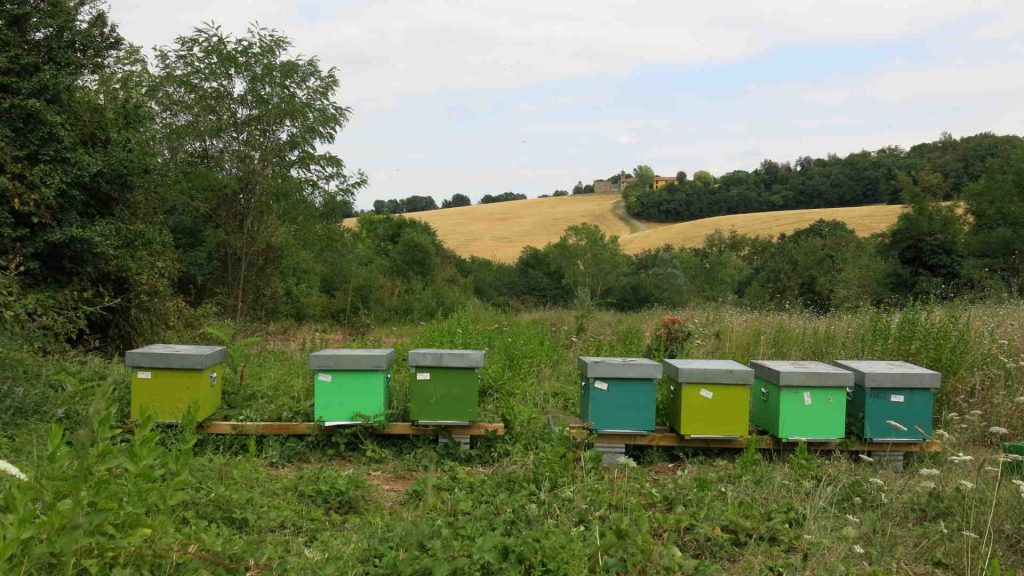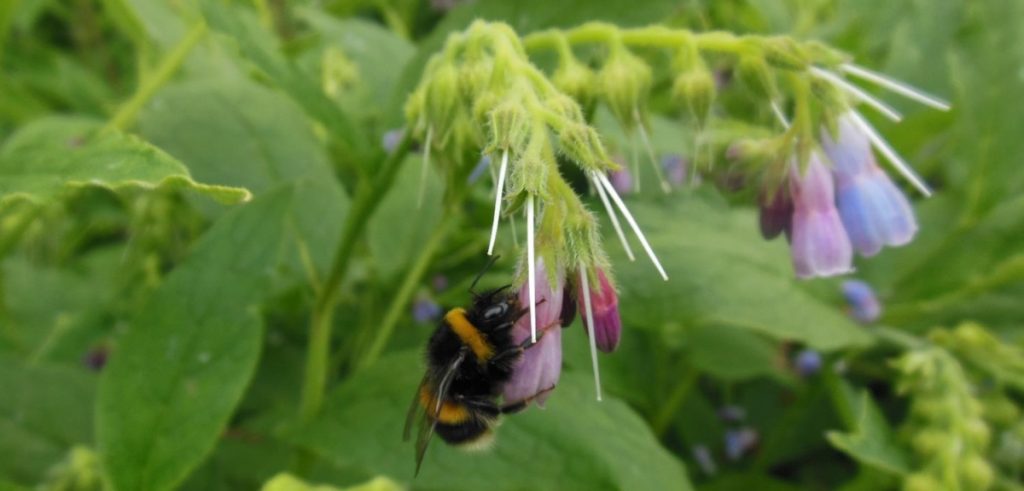Bee conservation – the term seems pretty straightforward. However, even such a noble goal can divide and create conflicts. Also between bee people. When I do talks and courses for beekeepers about “other” bees, I often get the question: “But you do like ‘real’ bees, too, don’t you?”. My answer is that I like all bees. Managed and unmanaged. Social or solitary. Generalists and specialists. They fascinate me, and it’s the diversity that interests me. And then I explain that “real bees” isn’t the right term, that honey bees are an exception in so many aspects. How can one out of 20,000 be the “real one”? This question, however, shows part of the problem: honey bees are the best-known bees. This creates much attention and increasing numbers of honey bee colonies worldwide. People think they “save the bees” by beekeeping. I have my doubts about this.
On the other hand, we have bee biologists and conservationists who – justifiably – claim that honey bees aren’t endangered. It’s the other species that are at risk, also by poor management practices from beekeepers. Moreover, and this is the main controversial issue, there’s competition between managed honey bees and wild pollinators. There’s an increasing tendency to exclude honey bees from protected areas to avoid that. Which upsets beekeepers who say that their bees protect nature. Tricky situation. A recent study in Denmark looked at how many plants are used by both managed honey bees and wild bees. This was – as you would expect – diverse. Some bee species used none of the flowers honey bees foraged on, like Melitta tricincta, a solitary bee specialized on bartsia (Odontites). However, there were 61 wild bee species that shared all of their foraging plants with honey bees.
Using the same resources
This overlap could be large, like a mining bee species using 18 flowers also honey bees like to visit. Sometimes they shared only a single plant. The impact, however, doesn’t depend on the number of flower species honey bees and wild bees visit. If a wild bee species is specialized in a single plant, then sharing it with honey bees could be a problem. It then also depends on the abundance of honey bees and how many other flowers the managed bees can forage on. As you see – this is again a complex topic. Therefore, the conclusions of this study start with a very scientific sentence:
We do not aim to establish if competition between honey bees and wild bees is measurable in Denmark or which densities of honey bees would be sustainable.
Rasmussen et al. 2021
I can literally see how the eyes of some of you glaze over. You want to know what to do to save the bees. Clear instructions and answers. I understand but stay with me. The point is: Bee conservation isn’t black or white. Or any conservation effort, for that matter. The beauty of living beings, of biodiversity, is precisely that: its diversity. Not that it’s all black and white, yes or no, right or wrong. These are categories we made up to make our lives easier. And even they look different in every culture, class, peer group, or whatever.
When I was about 10 years old, my father explained the Gaussian distribution to me. This may seem a bit precocious. It was, actually, my first lesson in diversity. I had classified someone as crazy. My father sat down with me, drew a bell curve, and explained how human behaviour is a continuum. This may serve also in this case. Between the extremes honey bees are “real bees” and “honey bees are like chicken” there is a whole variety of realities of how they do or don’t compete for resources.
A framework for bee conservation
Yet, we need a framework to decide on how to manage bee conservation and if and how to exclude or include honey bees in the picture. The Danish scientists give an initial tool for deciding if honey bees should stay out of an area or not. They suggest that a resource overlap (i.e. using the same flowers) above 70% with an endangered species would justify excluding honey bees from their habitat. Unfortunately, we still don’t know enough about the interactions between managed honey bees (or other managed bees, like bumblebees). Until we have more data, the Danish researchers opt for being cautious and…
… avoid placing honey bee hives in places close to known or suspected populations of threatened bee species.
Rasmussen et al. 2021
This seems sensible. More solution-oriented and flexible than the usual approach. I’m sure that both sides, beekeepers and conservationists, could agree on things like this if they were involved in the decision. Two French researchers, on the other hand, have a more inclusive approach to bee conservation. A protected area was very attractive for beekeepers in the time of rosemary bloom. This resulted in high honey bee density and decreased the foraging success of wild bee species. However, they also saw that with increasing distance from the apiary, the competition decreased. They propose the “Apiary Influence Range” (AIR) to help to decide on how to limit beekeeping activities in an area. This model is based on the distance between apiaries so that there is space for wild bee species to forage without being disturbed by honey bees.
Inclusive bee conservation
Both studies try to find an inclusive approach, to give beekeepers a chance to do their work and still not impact bee diversity by overcrowding and overexploiting an area. However, both of them are in the native range of honey bees. In areas where they’re not, this may completely change the picture. The “other bees” as beekeepers call them, also help to keep their honey bees healthy. Diversity is in their very own interest. However, coming back to the initial story I told you about beekeepers asking me if I also like “real” bees: In my opinion, this is an important issue to approach as soon as possible. No, without any delay. Beekeepers and the general public need to know about bee diversity, about all the shades of grey between the extremes of black and white. I tried to contribute my two cents with this series.
This article is the last of a series on bee diversity. May includes two important dates for bees: first, there’s World Bee Day on the 20th. Two day later, May 22nd, is the International Day of Biodiversity. So, what better opportunity to write about biodiversity and bees?
I dedicate this series to my father who taught me to love diversity and to think beyond the borders of black and white. I try to continue his legacy with this blog and the studies I do.
If you want to understand complex relationships, I’m here to help. I’ll be doing courses on bee diversity, bee health and bee conservation in the second half of the year.
If you have a specific issue, just contact me. A first 20-minute strategy call is free, to see how and if I can help you. I’ll be happy to help with your bee health questions, but if it doesn’t fit, that’s ok. You can book that appointment here: meetfox.com/e/beesafe



